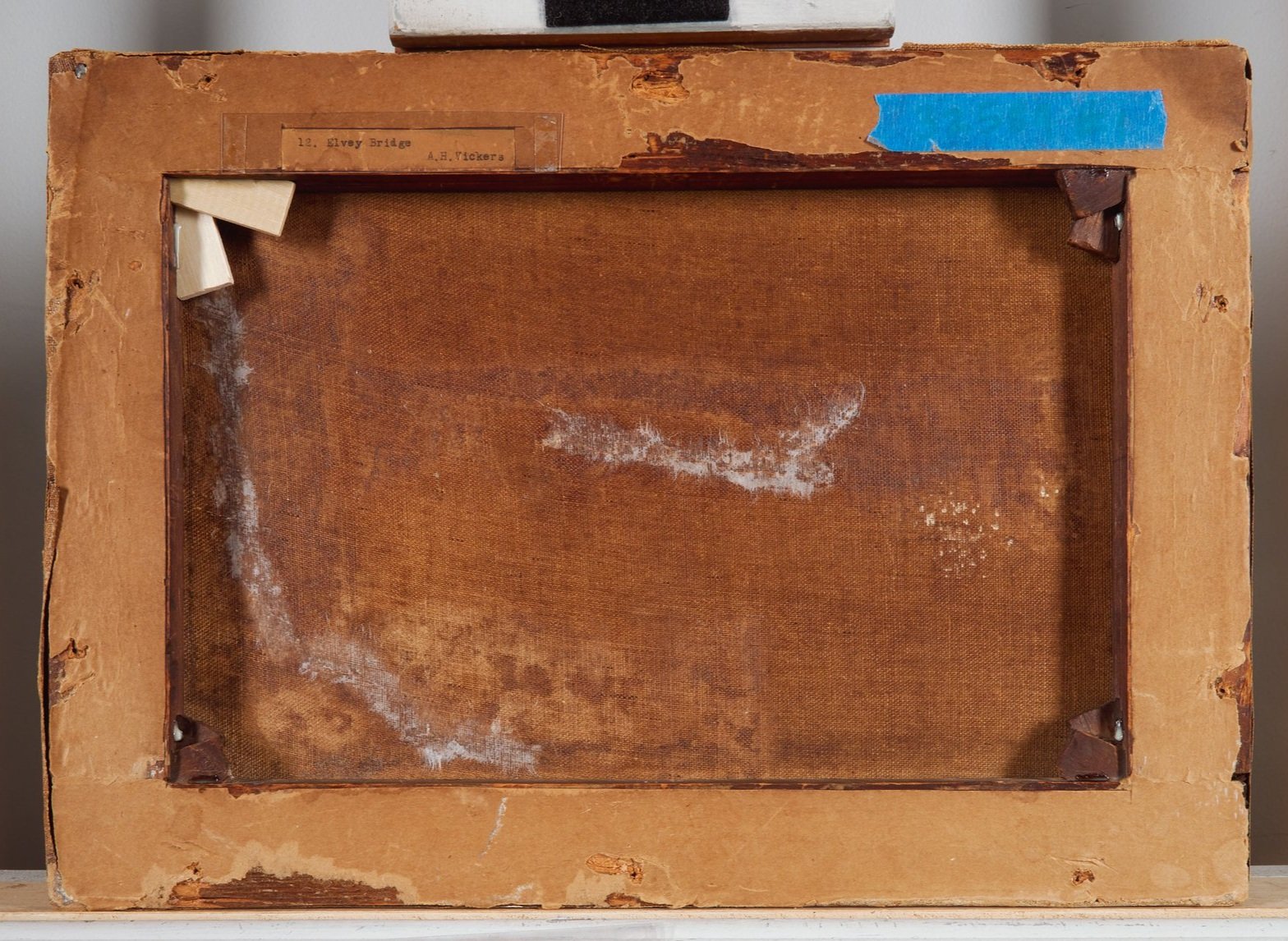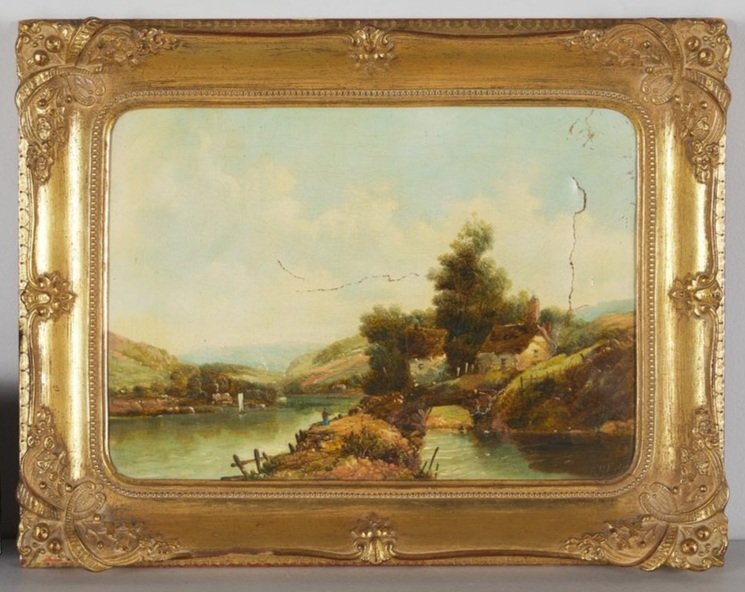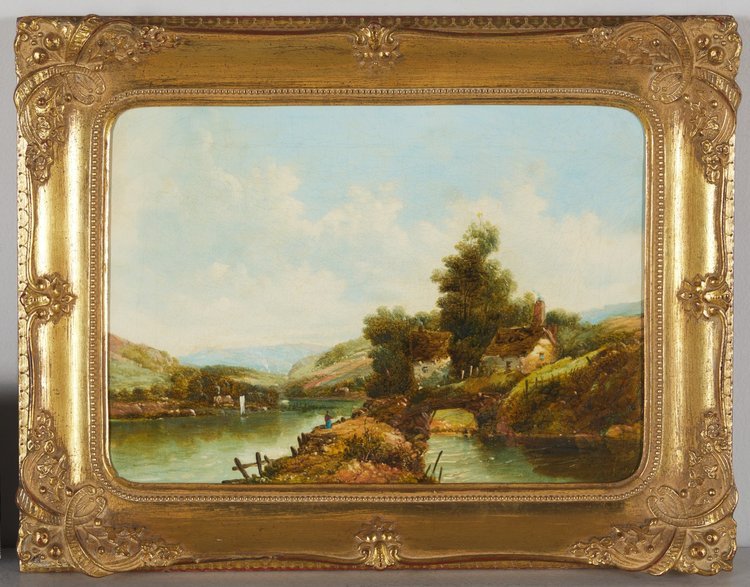Elvey Bridge during cleaning
Patrick Henry O'Brien was born in Laurium, Michigan, on March 15, 1868. His parents, Mary and Patrick, were immigrants from County Cork, Ireland, who settled in the Keweenaw Peninsula, Michigan, in 1863. The area was known as Copper County for the prevalent copper mining from the 1850s through the 1960s. Patrick lost both his father and uncle to mining accidents, leading him down a very different path.
Elvey Bridge before treatment
Patrick earned his law degree and was admitted to the bar on April 1, 1891. After studying and working around the Great Lakes, Patrick and his wife Bessie returned to Laurium, where they settled in 1899 with their four children. Patrick became the city attorney of Laurium from 1901 - 1906 and a judge on the 12th circuit court from 1912-1922. From then on, he was referred to as "The Judge" by friends, family, and even his grandchildren. But despite his ambition and success, Patrick never forgot his roots. Throughout his career, his focus was better treatment for all miners, and he made three trips to Ireland to visit relatives and see the land of his ancestors. During one of these trips, Patrick and Bessie purchased Elvey Bridge, an oil painting by A.H. Vickers (1853-1907). This painting hung in "The Judge's" home until he died in 1959.
Elvey Bridge before treatment under raking light
Elvey Bridge before treatment under raking light
Many years later, Patrick's great-granddaughter, Kim, brought Elvey Bridge to The Center for conservation so that the painting could be enjoyed on display once again. Still, several issues needed to be addressed to stabilize the painting. The stretcher exhibited numerous splits and brittle areas, which appear to be related to old nails. The painting canvas has three large, complex tears. There was a diagonal tear measuring about 1.5" to the left of the center of the painting, a horizontal tear measuring approximately 4" through the center, and a complex diagonal tear measuring about 9" through the right quarter of the painting. On the verso, three pieces of thick medical tape were adhered to most of the canvas, presumably to address the tears, and the tape adhesive was tenacious. The canvas also exhibited moderate deformations throughout the surface.
Painting verso before treatment
The painting surface also exhibited age-related craquelure throughout. There were fourteen small paint losses in the upper right corner ranging in size from 1/8" to 1". The surface also showed five paint losses in the water near the bottom to the right of the center. The painting appeared to have been varnished with a natural resin, which now appeared dull and discolored. During the examination, the conservators found that the varnish layer was heavier in the darker passages in the foreground than elsewhere, indicating the painting had been partially cleaned in the past.
Before treatment, Elvey Bridge under raking light
The frame is comprised of wood, compo, red bole, and imitation gold leaf. There were small cracks at the miters, and the surface exhibited minor scratches, abrasions, and dents. There were areas of compo loss at the lower left miter, and the upper edge of the frame at the bottom left. Minor gesso and gilding losses were also evident. The frame's finish appeared intentionally distressed and original to the piece.
The main focus of treatment was stabilization, to secure the tears in place more effectively and better secure the painting's surface. Rebecca Vodehnal, Associate Paintings Conservator, began treatment by consolidating the flaking paint with conservation adhesives to ensure the paint layer was stable before proceeding with structure repairs. Then, the verso tapes could be safely used using mechanical conservation techniques. The tape left behind a heavy glue layer, likely animal glue, which was removed using mechanical and poultice techniques.
During cleaning, the cleaning line can be seen showing the difference between the left where the grime and varnish has been removed compared to the right that has yet to be cleaned.
During cleaning under UV light, the cleaning line can be seen showing the difference between the left where the grime and varnish has been removed compared to the right that has yet to be cleaned.
The canvas deformations were flattened as best as possible using a combination of heat, humidity, and weight techniques. The tears were mended with conservation adhesives and Japanese tissue. The varnish layer was removed, reducing overpainting areas in the sky. The losses were filled and textured using an appropriate conservation grade fill material. A coat of isolating varnish was applied to saturate the paint layer. Inpainting was then carried out in areas of loss and abrasion using reversible conservation paints. A final coat of spray varnish was applied to integrate the surface of the painting.
Painting verso during treatment, with tapes removed and tear repair in progress
The frame was cleaned, and the flaking gilding and gesso were consolidated using an appropriate conservation adhesive by Senior Conservator of Furniture Stephen Ryan. Losses, scratches, and abrasions that extend through the bole layer were inpainted to emulate the surrounding surface as closely as possible. Finally, Steve applied a protective layer of wax to the frame's surface. The painting was reinstalled into the existing frame to conservation standards, with an acid-free coroplast backing board attached to the reverse to provide additional protection.
After The Judge's passing in 1959, the painting was put in the care of his son, Daniel. Daniel soon gifted Elvey Bridge to his daughter and son-in-law - Kim's parents - to furnish their new home when they moved to Chicago in the early 1960s. Kim shared, "When my father passed away in January of 2021, I was helping my mother clear out a few items from their condominium and found the oil painting tucked away in one of their closets. She asked me to please take it, and once home, I knew it could not be hung in the condition that it had deteriorated to. So here we are, many years later, and I could not be happier than to have the painting restored and hung once again, on a wall, in the family, and adored!"











